Harmonious physical development is the key to not only an attractive, but also a healthy body.
Content
- Why is it necessary to develop flexibility
- How to develop back flexibility
- Technique "Wave" for the development of flexibility
- Technique "Big Wave" for the development of flexibility
- Exercise "Diagnies" for the development of flexibility
- Exercise "Boat" for the development of flexibility
- Exercise "Kitty" for the development of flexibility
- Exercise "Bridge" for the development of flexibility
- How to develop body flexibility
- How to develop legs flexibility
- How to develop hands flexibility
- How to develop fingertips
Smooth elegant movements, graceful posture - a dream of almost every representative of the fair sex. Also, men should not forget about the tone of the muscle frame. Exercises for the development of flexibility and plasticity are relevant at any age. Do not despair and put a cross on yourself, even if you crossed the margin of 30, 40 or more years. Many are worried about the question, is it possible to develop flexibility and plastic on their own at home?
Why is it necessary to develop flexibility
The word "flexibility" is familiar to everyone, but what does it mean? This term characterizes the degree of mobility of the joints of the body, which is not only possible, but also needs to be trained. Special sets of exercises will help to develop flexibility regardless of the level of your preparation. Some people mistakenly think that stretching exercises and development of plasticity are necessary only in some cases, for example, athletes or dancers. This is wrong. A set of stretching exercises has a beneficial effect on the entire human body, at whatever age training is carried out. So classes:
- Strengthen and tone the muscle frame.
- Make more mobile joint joints.
- The blood supply to the joints and ligaments improves.
- Reduce pain and cramps in the muscles.
- Form beautiful even posture.
- Increase endurance of the body.
- Improve sleep and general condition of the body.
If you do not plan to go to great sport, then how gymnasts develop flexibility is unlikely to be useful to you. In the case of the latter, often a high sports result is to the detriment of health. But we want to be beautiful, fit and, of course, healthy.

How to safely develop flexibility: useful recommendations before training
Compliance with simple but important rules will allow not only to achieve the desired results, but also to avoid injuries and other troubles. Of course, after 1-2 training, the result will not be noticeable, but in a month of regular work your body will pleasantly surprise you.
- For training, select free clothes made of natural materials. It should be comfortable and not constrain your movements. The legs should also not remain naked - put on socks or comfortable sneakers.
- In order to avoid injuries during training, it is better to carry out classes on a special rug or mat.
- Before working with any muscle group, the latter should be prepared - warm up. Depending on the individual characteristics of the body, you can limit yourself to preliminary aerobic warming or connect warming ointments or belt (if we are talking about the development of the flexibility of the spine).
- Preparatory training should last at least 5 minutes - running in place, jumping with a rope, swinging arms and legs.
- Do not forget about breathing. Control it at each stage of performing exercises for the development of flexibility.
- The key to safe training is smooth movements. When performing exercises developing flexibility, you should not experience discomfort, but only stress.
- It is also not worth overloading the body. Exercises should alternate with rest.
- Each exercise should be repeated 5-10 times. The optimal frequency of classes is 2-3 times a week.
- And of course, regularity - only a systematic approach to performing exercises will give the desired effect.
Many described exercises are suitable not only for children, but also for adults. However, before developing flexibility in a child, it is advisable to get a consultation with a doctor or a competent coach. Age and individual characteristics will be taken into account and training will have an extremely positive effect.
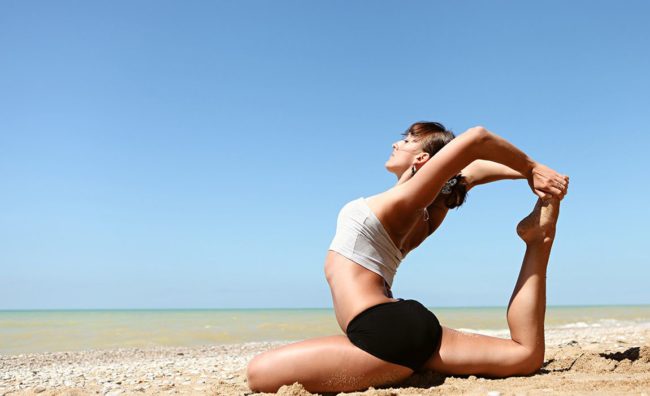
Erroneous conclusions about stretching
The plasticity and flexibility of the case, which the stretch gives, often evoke the opinion that not everyone and a number of other myths can do it. So, in order:
- Error 1. Flexibility is given to man by nature, so without congenital inclinations you are nowhere. The statement is partly partly. Of course, you are unlikely to become a professional athlete without natural data. But the basic techniques aimed at maintaining the tone of the body, the muscles of any person are able to overpower.
- Error 2. Stretching exercises make sense only from an early age, after 30, their implementation is almost impossible. How to develop flexibility, for example, the back of an adult, if its peak falls on the age of 13-14 years? It is undoubted that children's joints are more mobile and muscles respond faster to exercises. One of the main advantages of stretching is its availability to everyone, regardless of age. Yes, you have to spend more time. But everything is in your hands.
- Error 3. Stretching training inevitably accompanies pain. This is wrong. Moreover, if you really hurt, then something goes wrong. When performing exercises, you experience tension, a feeling of bursting, pressure, but not pain.
- Error 4. This type of class does not lead to weight loss. If you compare with cardio training, then, of course, the difference will be present. But do not forget that physical exercises (any) are a load for the body, which means that an additional cost of calories will inevitably be.
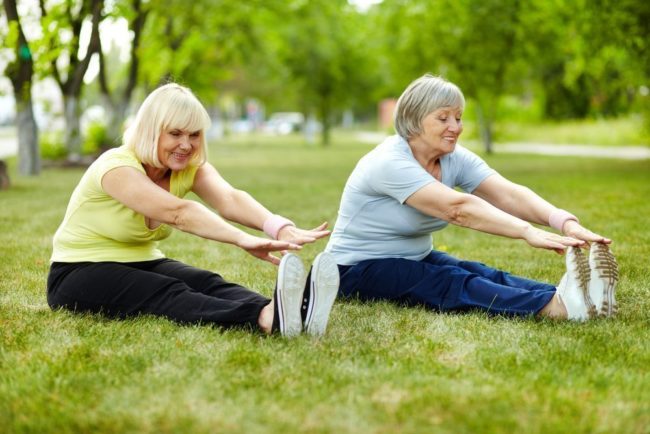
Contraindications to perform flexibility exercises
- Trained injuries or surgical interventions on any area of \u200b\u200bthe spine.
- Diseases of the musculoskeletal system.
- Pathologies of the heart and blood vessels.
- Diseases of the joints and ligaments.

How to develop back flexibility
A flexible back is not only a beautiful posture, a harmonious silhouette, but also a healthy spine. The training of the muscle frame of the case improves the coordination of movements, allows you to achieve higher results when doing dancing or sports. Before developing the flexibility of the spine, make sure that there are no contraindications for training, and best of all consult a doctor.
Technique "Wave" for the development of flexibility
- Sit on the floor. The buttocks lie on the heels, the back is straight, the shoulders are straightened, the hands are lowered down.
- On inspiration, stretch the crown as up as possible, as if stretching your head out of the shoulders.
- On the exhale, it is relaxed to gently round your back (gradually, starting from the lumbar). In the end, lower your head.
- Next, take a breath again and straighten up - the back is first straightened, then the back, shoulder blades, and after the neck and head.
- Exhale again (according to the above scheme). Alternating breaths and exhalations, your spine will describe a peculiar wave. With each breath and exhalation, if possible, increase the amplitude of movements, leaning as low as possible.

Technique "Big Wave" for the development of flexibility
- From the position on all fours lower the body so that the buttocks are located on the heels, the stomach on the hips, and the forehead rests on the floor. Hands lie in front. Relax.
- Take a deep breath, and by exhaling a little lift the pelvis. The back is rounded. Submit the body a little forward, gradually laying the body on the floor, the vertebrae after the vertebra. Hands bend, palms remain at the chest level.
- Next, inhale and smoothly return to the original pose - the head, then the chest, the back is rising smoothly, and the back and the buttocks are placed on the heels.
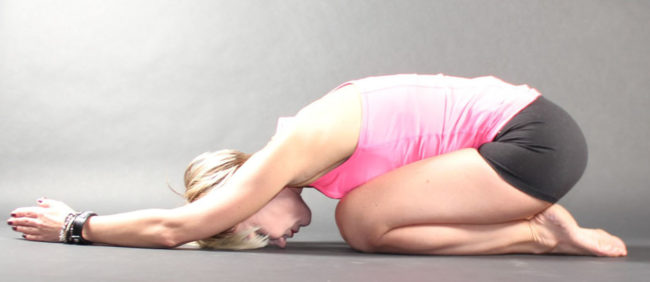
Exercise "Diagnies" for the development of flexibility
- The starting position is sitting on the floor, the priest on the feet.
- Avert your hands a little back and rest your palms on the floor.
- On inspiration, pull the chest forward and a little up, trying not to throw your head back. Fix this position.
- On the exhale smoothly lift the pelvis, increasing the deflection. The chin is aimed at the chest. To avoid overstrain in the neck, it is recommended to look at the exhalation on the exhalation.
- Next, take a breath and sink to the heels.
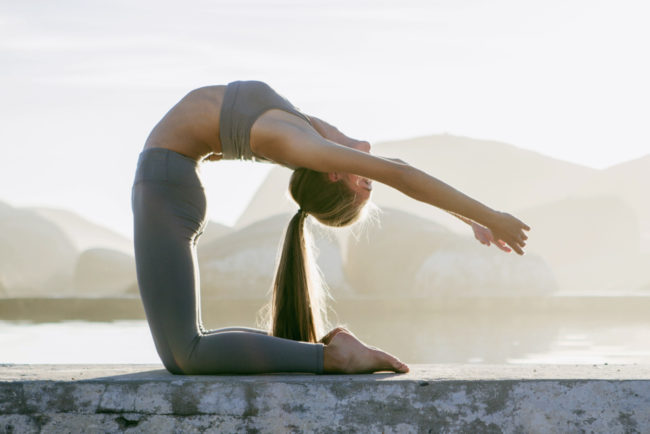
Exercise "Boat" for the development of flexibility
- Go to the floor. Hands are bent at the elbows, the forearms lie on the floor.
- On inspiration, slowly straighten your arms. The shoulder blades stretch to the heels, the crown is up. Do not throw your head back. Hold at the maximum point.
- During a calm exit, return to the basic position.
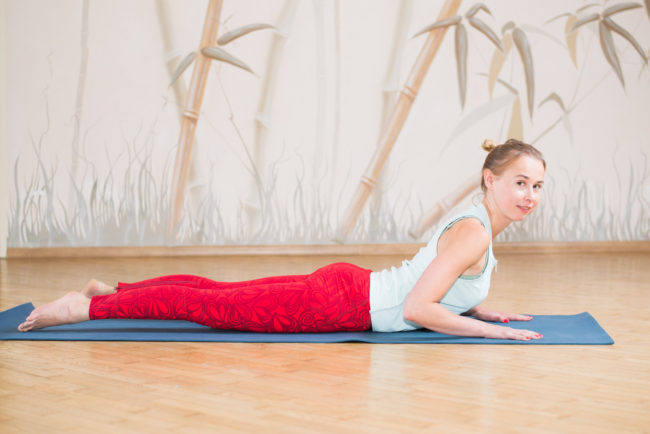
Exercise "Kitty" for the development of flexibility
- Stand on all fours, your back is soft, relaxed.
- On inspiration, round your back, on exhalation, make the most deep deflection.
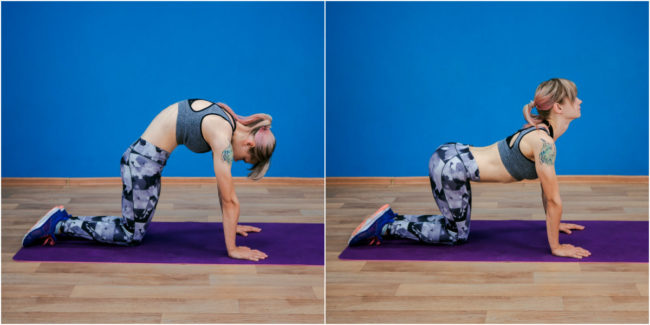
Exercise "Bridge" for the development of flexibility
At the end of the exercise cycle, your back is prepared for a more serious load-try to stand on the p. To do this, in a lying position, set your arms near the head (the palms lie on the floor), the legs are bent at the knees (the feet are also on the floor). Point on your arms and legs and raise as much as possible the case up.
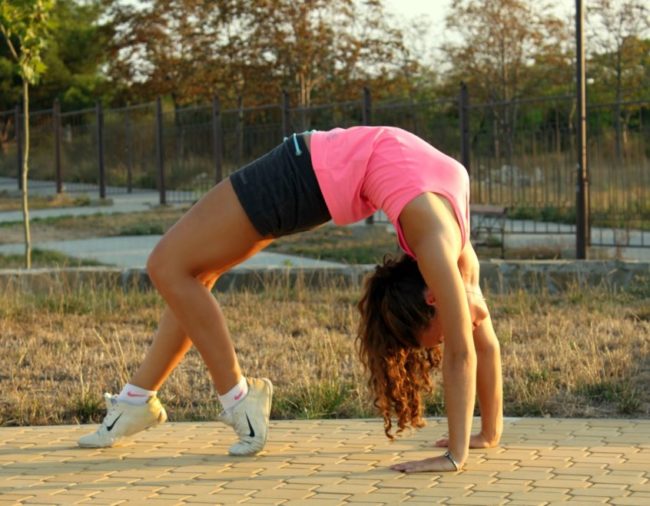
How to develop body flexibility
Body flexibility is the youth and vigor of your body. Exercises aimed at working out not only muscles, but also joints have a comprehensive effect on the body. Correct breathing during the implementation of the technique normalizes the heart rhythm, there is a general strengthening of the immune system. Before developing flexibility at home, conduct a warm -up.
- Next, sit down so that your buttocks are located on the feet. Take a deep breath, breaking your arms to the sides. In the back is a slight deflection, the chest “steps forward”. Return to the starting position on the exhale.
- Sit on the floor. Legs are straight, maximally divorced on the sides. Keeping your back straight, try to slowly and smoothly lean towards the right leg. Get your fingers to the right foot. If this stage is mastered successfully, try to put the entire building on the leg. Start with the abdomen that you put on the thigh, then it follows the chest and only lower your face. You repeat similar actions for the left leg.
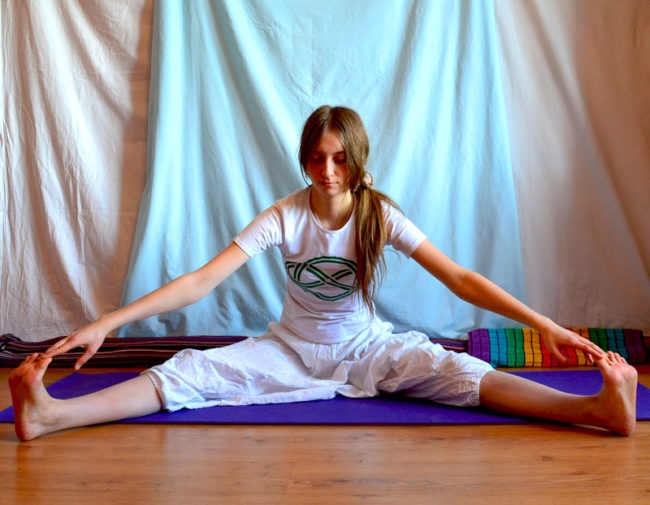
- The starting position, as in the previous exercise. Bend the right leg at the knee, tighten the foot as close to the inguinal region. Slowly perform a tilt to the straightened leg. First, try to clasp your feet with your hands, and after smoothly attract the body to the leg. Lean as much as flexibility allows. The movements should be soft, slightly springy. Lying in this position for a few seconds. Repeat similar actions for the other leg.
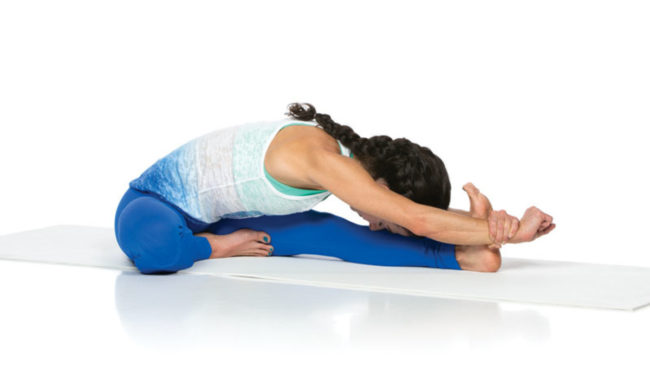
- Stand up. Make a calm deep breath. At this time, raise your right hand up. The left limb is lowered down. Next, make a slope to the left. At the same time, the left hand slides along the thigh, and the right one bends along with the body. Take the starting position and repeat similar actions in the other direction.
- In a standing position, raise both hands up. On the exhale, the upper part of the case and head reject the head back. The gluteal muscles are tense and tightened. On inspiration, return to the starting position.
- Next, without a pause, after the previous exercise, tilt the body forward. Lower the body until the tailbone and back form a single line. Continue to bend. Now your task is to reach the ankles with your hands. In this case, the case is pulled as close as possible (as far as possible) to the legs. Fix this position with several respiratory cycles. Next, return to the original position.

How to develop legs flexibility
Age -related changes and a decrease in motor activity inevitably leads to muscle weakening. If we are talking about the legs, then here, first of all, the ankle joints, the muscles of the lower leg, the arches of the feet are “surrendered”. Only a few exercises, the implementation of which should be on a regular basis, give your legs the necessary stretching.
- Sit down by placing the gluteal muscles on the heels. The case is located vertically. Relax and feel how the ankle joints, the muscles of the hips stretch. Remove the right leg out of the priest and set the right foot next to the left knee. The right knee is at the level of the armpit. Tear off the right heel from the floor and pull the Achilles tendon. Repeat similar actions for the other limb.
- From the position of sitting on your knees, bring your left leg back. The case is slightly tilted forward, hands rest on the floor. Perform the torso forward, trying to put the chest on the right knee. You must feel how the left thigh stretches. Repeat the exercises for the second leg.
- The left leg is fed back, the knee does not touch the floor. The right foot lies on the floor, the lower leg forms a right angle with a thigh. Try your arms around, try to hold the body vertically. With slightly springy movements, lower the pelvis as low as possible. The exercise helps to improve flexibility in the pelvis and hips. This technique will help those who do not know how to develop the flexibility of the joints.
- This exercise is similar to the previous one, but the knee of the left leg should lie on the floor.
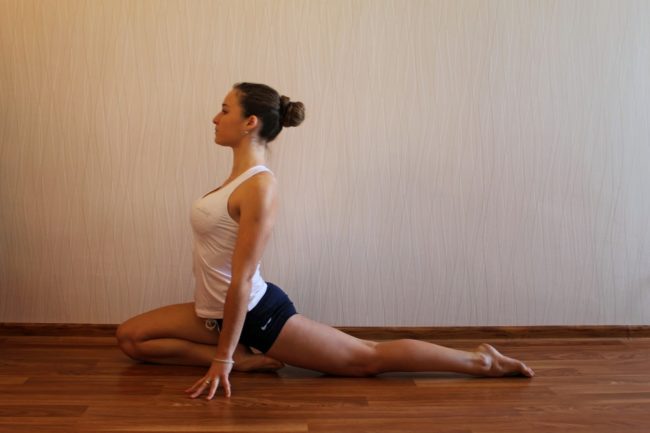
- The inner hips of the boat will help to “pull” the inner thighs. Sit down on the buttocks, your legs are bent at your knees, the right and left foot in contact with each other. Place your hands in the ankles, the elbows are slightly bent. Slowly tilt forward until the voltage appears in the groin. Hold in this position.
- In a standing position, bend your right leg at the knee. Helping with your hand, tighten the right foot to the buttocks so that the knee of the right leg is directed down. Hold in this position, feeling the tension in quadriceps. Next follows the repetition for the left leg.
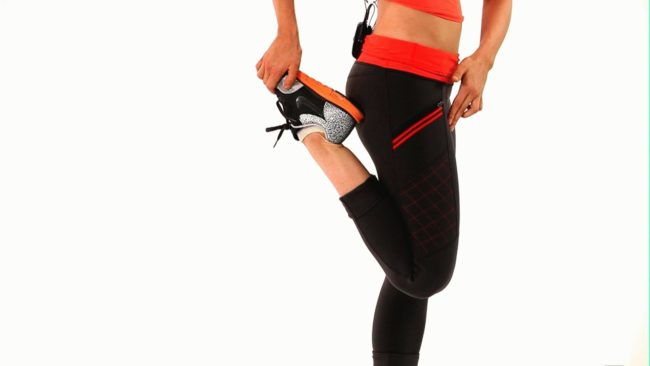
- Lie down on your back. The right leg is straightened (or bent at the knee). You grab the left limb with your hands and, without bending at the knee, pull it up to the chest.
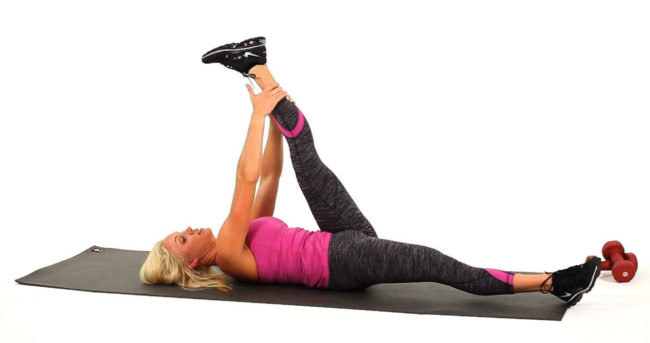
How to develop hands flexibility
The stretching of the hands can be unfairly pushed into the background or completely forgotten. This should not be allowed. Training of the muscles and joints of the upper extremities is also necessary, as well as the study of any other part of the body.
- Exercise for stooping stoop - basic technique for stretching the hands. Stand straight. The left hand drops down, and the right - rises. Bend both hands at the elbow and try to cleanse them behind your back in the “castle”. If it was not possible, try to reach each other with your fingers. Even if your fingers cannot contact, take a towel and with it pull one hand to the other (grabbing the ends).
- Stand straight, spread your arms to the sides. Ask relatives or friends slightly, but significantly pulling you by the hands in opposite directions.
- In the standing position, get your hands behind your back and connect them into the “lock”. Without unclenching your hands, make the tilts of the case forward.
- In the standing position, smooth the right elbow to the left shoulder smoothly. Lying in this position for 10 seconds and repeat the exercise for the second hand.
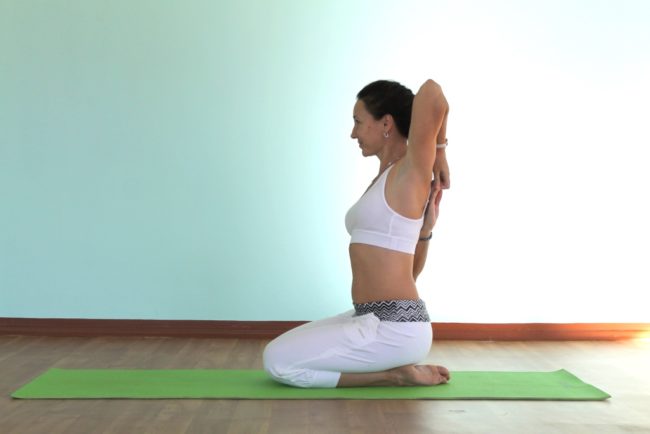
How to develop fingertips
We are used to the fact that the term “flexibility” is most often associated with arms, legs or back. But even fingers can be flexible.
- The easiest way to work out is using balls-carriers. Take 3 smooth balls (diameter of the order of 3 cm) and move them in the palm of your hand using all fingers.
- A good effect also gives regular fingers - work out each finger from the pillow to the base.
- Squeeze sharply and unclench your fingers, trying to spread them as wider as possible. The number of repetitions is 10-15 times.
- Place all the fingers of the hand on the edge of the table except the big. Lower your palm with springy movements. The fingers remain motionless. Repeat the exercise for the right, and then for the left hand.
- Place your palms on the table and take each finger from its surface alternately, trying to raise the phalanx as high as possible, and then lower your finger on the table. The number of repetitions for each hand is 4-5 times.
- Place your palms towards each other (emphasis with your fingers). Next, make the “castle” sharply return your palms to the original position. Repeat the exercise 15 times.
- Place your hand in front of you. Take the thumb to the side, separately from the rest. The brush and 4 fingers remain not mobile, and the thumb performs rotational movements. Then the brush itself rotates. First, take the movements in one direction, then in the other. This exercise contributes to the development of flexibility of the wrist.
After the exercises, rinse your hands with cool water.

Do not be discouraged if you do not feel the result immediately, since the development of plasticity and flexibility requires time and perseverance. Regular implementation of a set of exercises will necessarily lead to a positive effect.









Comments
a couple of years ago, there was no side of metrogils from the same problem, there were no side effects ...
I’m not a fan of peeling at all, it saves from acne of metrogil, it also smoothes it ...
Great article! ...
I take the second course of the Capsules Climafite 911. The tides went very quickly. It became calmer, irritability went away and I sleep well ...
i also noticed - it is worth nervous, everything immediately affects the face. Therefore, I try to avoid conflicts and unpleasant people. Of the creams, I like Miaflow from wrinkles - smoothes not only small wrinkles ...